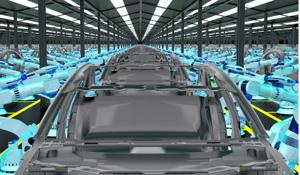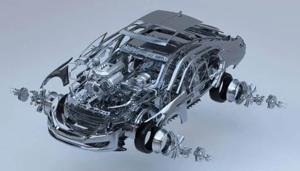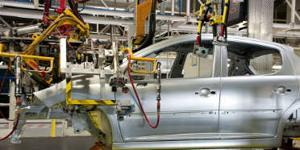Content Menu
● Understanding Aluminum Extrusion
● The Benefits of Aluminum Extrusion in Automotive Applications
● Applications of Aluminum Extrusion in the Automotive Industry
● Trends in Aluminum Extrusion for Automotive Applications
● Challenges Facing Aluminum Extrusion in Automotive Manufacturing
● Innovations Driving Aluminum Extrusion Forward
● Future Outlook
● Conclusion
● FAQ
>> 1. What are some common applications of aluminum extrusion in cars?
>> 2. How does aluminum compare to steel in automotive applications?
>> 3. What are the environmental benefits of using aluminum extrusion?
>> 4. Are there any downsides to using aluminum extrusions?
>> 5. How is technology improving aluminum extrusion processes?
Aluminum extrusion is rapidly transforming the automotive industry, offering innovative solutions that enhance vehicle performance, safety, and sustainability. This article delves into the various applications of aluminum extrusion in automotive manufacturing, exploring its benefits, challenges, and future trends.

Understanding Aluminum Extrusion
Aluminum extrusion is a manufacturing process that involves shaping aluminum alloys into specific profiles by forcing heated aluminum through a die. This process allows for the creation of complex geometries that are not feasible with traditional metalworking methods. The resulting extruded shapes can be used in a wide range of automotive components, from structural parts to aesthetic finishes.
The Benefits of Aluminum Extrusion in Automotive Applications
1. Lightweight Design
One of the most significant advantages of aluminum extrusion is its lightweight nature. Automakers are increasingly focused on reducing vehicle weight to improve fuel efficiency and reduce emissions. Aluminum is approximately one-third the weight of steel, making it an ideal choice for various automotive applications.
- Fuel Efficiency: Lighter vehicles require less energy to operate, which translates to better fuel economy. For instance, reducing a vehicle's weight by 10% can lead to a 6-8% improvement in fuel efficiency.
- Performance: Reduced weight enhances acceleration and handling. Sports cars and performance vehicles benefit significantly from lightweight materials, allowing for improved speed and agility.
2. High Strength-to-Weight Ratio
Aluminum extrusions possess a high strength-to-weight ratio, making them suitable for critical structural components without adding excessive weight. This characteristic is particularly beneficial in areas such as:
- Chassis Components: Extrusions are used in chassis designs to provide strength while minimizing weight. This is crucial for maintaining structural integrity while optimizing performance.
- Safety Features: Components like crash management systems benefit from aluminum's ability to absorb energy during impacts. The material's ductility allows it to deform upon impact, thereby protecting passengers.
3. Corrosion Resistance
Aluminum naturally resists corrosion, which extends the lifespan of automotive components and reduces maintenance costs. This property is especially important in environments where vehicles are exposed to moisture and road salt.
- Longevity: Corrosion resistance means that aluminum components can last longer than their steel counterparts, reducing the need for replacements and repairs.
- Lower Maintenance Costs: Vehicles with aluminum parts often require less frequent maintenance due to their durability against environmental factors.
Applications of Aluminum Extrusion in the Automotive Industry
The versatility of aluminum extrusion allows it to be used in various parts of automobiles, including:
- Body Structures: Aluminum extrusions are increasingly used in body frames and panels, contributing to overall vehicle strength and safety. The use of aluminum in crash structures can enhance passenger protection during collisions.
- Suspension Systems: Components such as control arms and knuckles can be made lighter yet stronger through aluminum extrusion. This not only improves handling but also contributes to better ride quality.
- Battery Enclosures: In electric vehicles (EVs), aluminum extrusions are used for battery housings, providing both protection and thermal management. The lightweight nature of aluminum helps offset the weight of the batteries themselves.
- Interior Components: From dashboard supports to trim pieces, extruded aluminum adds aesthetic value while maintaining functionality. The ability to create intricate designs allows for greater customization options in vehicle interiors.
Trends in Aluminum Extrusion for Automotive Applications
The automotive industry is witnessing several trends that favor the adoption of aluminum extrusions:
1. Sustainability
As manufacturers strive for greener practices, aluminum's recyclability makes it a sustainable choice. The energy required to recycle aluminum is significantly lower than that needed for primary production.
- Closed-loop Recycling: Many automakers are implementing closed-loop systems where scrap aluminum from production processes is reused in new products, further reducing waste.
2. Complex Geometries
Advancements in extrusion technology allow for the creation of intricate designs that enhance both performance and aesthetics. This capability enables manufacturers to innovate continuously.
- Customization: Manufacturers can tailor extruded shapes to meet specific design requirements or performance criteria, leading to more efficient production processes.
3. Electric Vehicle Integration
The rise of electric vehicles has further accelerated the use of aluminum extrusions. EV manufacturers utilize these components for their lightweight properties and superior thermal management capabilities.
- Thermal Management: Effective thermal management is crucial for battery performance and longevity; aluminum's thermal conductivity helps dissipate heat efficiently.
Challenges Facing Aluminum Extrusion in Automotive Manufacturing
Despite its benefits, the use of aluminum extrusion in automotive applications comes with challenges:
- Cost: While aluminum can reduce overall vehicle weight and improve fuel efficiency, the initial cost of materials and processing can be higher than traditional materials like steel. However, this cost can be offset by savings on fuel consumption over time.
- Joining Techniques: Joining aluminum components often requires specialized techniques such as welding or adhesive bonding, which can complicate manufacturing processes. Innovations in joining technologies are being developed to address these challenges.

Innovations Driving Aluminum Extrusion Forward
The future of aluminum extrusion is being shaped by technological advancements that enhance its applications within the automotive sector:
1. Advanced Alloys
Research into new aluminum alloys has led to materials with improved strength and corrosion resistance characteristics. These advancements allow manufacturers to push the boundaries of what is possible with extruded components.
2. Automation and Robotics
The integration of automation and robotics into the extrusion process has increased efficiency and precision while reducing labor costs. Automated systems can handle complex tasks such as die changes or quality inspections more quickly than manual methods.
3. Digital Twin Technology
Utilizing digital twin technology allows manufacturers to simulate production processes before implementation. This technology helps identify potential issues early on, leading to more efficient production cycles and reduced waste.
Future Outlook
The future of aluminum extrusion in the automotive industry looks promising as manufacturers continue to prioritize lightweight materials for improved efficiency and sustainability. Innovations in alloy compositions and extrusion technologies will likely lead to even more applications.
As electric vehicles become more prevalent, the demand for lightweight materials like aluminum will continue to grow. Automakers will increasingly rely on extruded components not only for structural integrity but also for enhancing battery performance through effective thermal management solutions.

Conclusion
Aluminum extrusion is revolutionizing the automotive industry by providing lightweight, strong, and corrosion-resistant solutions that enhance vehicle performance and sustainability. As technology advances and demand for electric vehicles grows, the role of aluminum extrusions will become even more critical.
The shift towards sustainability combined with technological innovations positions aluminum extrusion as a key player in shaping the future of automotive manufacturing.
FAQ
1. What are some common applications of aluminum extrusion in cars?
Aluminum extrusions are commonly used in body structures, suspension systems, battery enclosures for electric vehicles, and interior components like dashboards.
2. How does aluminum compare to steel in automotive applications?
Aluminum is lighter than steel, which helps improve fuel efficiency and performance while offering similar strength characteristics when designed properly.
3. What are the environmental benefits of using aluminum extrusion?
Aluminum is highly recyclable, requiring less energy for recycling compared to new production. This reduces overall carbon emissions associated with vehicle manufacturing.
4. Are there any downsides to using aluminum extrusions?
While they offer many benefits, aluminum extrusions can be more expensive than traditional materials like steel, and joining techniques may require specialized skills or equipment.
5. How is technology improving aluminum extrusion processes?
Advancements include better alloy compositions for enhanced strength and durability as well as improved techniques for creating complex shapes that were previously difficult or impossible to manufacture.






















